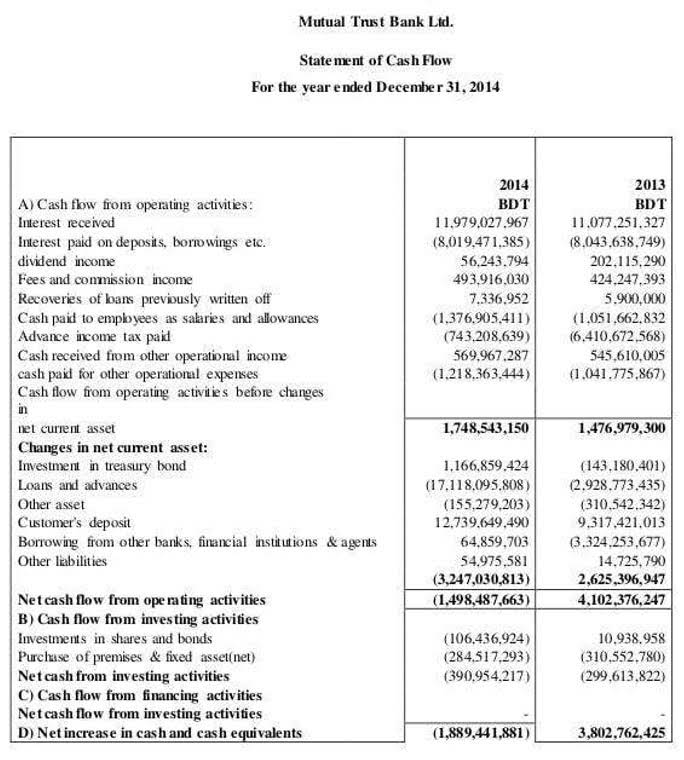
The purpose of the statement of profit or loss and other comprehensive income (PLOCI) is to show an entity’s financial performance in a way that is useful to a wide range of users. The statement should be classified and aggregated in a manner that makes it understandable and comparable. An entity may refer to the combined statement as the Statement of comprehensive income. An entity has to show separately in OCI, those items which would be reclassified subsequently (‘recycled’) to profit or loss and those items which would never be reclassified subsequently (‘recycled’) to profit or loss. A statement of comprehensive income is known as a financial report that lays out the change in a company’s net assets during a specific time.
Statement of Comprehensive Income Financial Position
To get a more inside look at an organization, look for other statements that are from previous 10 years of financial records and try to spot a trend. It will assist you in determining the risk-to-reward ratio even before you invest in the company. For more information and a more complete balance sheet visit our Balance Sheet Explanation. Some U.S. corporations have accounting years that end on a date other than December 31. For example, a corporation could have an accounting year that begins on July 1 and ends on the following June 30.
Guide to Understanding the Comprehensive Income Statement
However, when Cris sells the shares, it becomes earned income and is added to the income statement. Examples of transitory gains and losses are those that arise on the remeasurement of defined benefit pension funds and revaluation surpluses on PPE. The Statement of Comprehensive Income, commonly known as the Profit and Loss Statement, tells us whether an organization generates a profit or a loss for a period of time.
- Examples of unrealized income include cash flow hedge, derivatives of financial instruments, and gains/losses from foreign currency transactions.
- This account balance or this calculated amount will be matched with the sales amount on the income statement.
- When a U.S. corporation’s shares of stock are traded on a stock exchange, we say that the shares are publicly traded or publicly held.
- However, it doesn’t offer a complete view of the company’s profitability, as it excludes unrealized income.
- This statement encompasses both the current revenues that come as a result of the sales and the accounts receivables, which the firm is yet to be paid.
- The purpose of the statement is to show all changes in equity other than those resulting from investments by and distributions to the owners of the business.
Customizable Profit and Loss Layout Template
Discontinued operations are separately reported below the continuing operations. The separate disclosure and format for the discontinued operations section is a reporting requirement and is discussed and illustrated below. The net sales condensed or single-step formats make the statement simple to complete and keeps sensitive information out of the hands of competitive companies, but provides little in the way of analytical detail.
- The original logic for OCI was that it kept income-relevant items that possessed low reliability from contaminating the earnings number (profit for the year).
- All companies are required to report each of the categories above net of their tax effects.
- Any gains/losses due to the change in valuation are not included in the Income Statement but are reflected in the Statement of Comprehensive Income.
- Although these aren’t recognized as income in the income statement, they are considered unearned income for the company.
- In comparison, OCI consists of gains or losses that aren’t realized in the income statement.
The systematic allocation of the cost of an asset from the balance sheet to Depreciation Expense on the income statement over the useful life of the asset. (The depreciation journal entry includes a debit to Depreciation Expense and a credit to Accumulated Depreciation, a contra asset account). The purpose is to allocate the cost to expense in order to comply with the matching principle.

What’s Included
- Comprehensive income is often listed on the financial statements to include all other revenues, expenses, gains, and losses that affected stockholder’s equity account during a period.
- Who knows when you’ll be seeking new investors or expanding to multiple countries.
- However, since it is not from the ongoing operations of the company’s normal line of business, it is not appropriate to include it in the traditional income statements.
- A common misunderstanding is that the distinction is based upon realised versus unrealised gains.
- To see a more comprehensive example, we suggest an Internet search for a publicly-traded corporation’s Form 10-K.
The statement of comprehensive income is Law Firm Accounts Receivable Management also useful for identifying trends that could impact a company’s equity in the future. Under the accrual method of accounting, revenues are reported on the income statement in the accounting period in which they are earned (and there is a reasonable assurance that the amounts will be collected). The revenues (and the related assets) are likely captured at the time that the sales invoice is prepared. At the end of the accounting period, accountants will also prepare adjusting entries for revenues that were earned but were not yet fully processed through the accounting system. As a straightforward explanation, the account (other comprehensive income) is used to adjust the increase or decrease in fair value of certain investments.

Since this statement is related to a company’s bottom line, it can give investors as well as owners valuable insights into a company’s overall performance and health. This ratio is an indicator of a company’s ability to meet its current obligations. Cost of goods sold is usually the largest expense on the income statement of a company selling products or goods.

Narrow approach to the OCI
A balance sheet with classifications (groupings or categories) such as current assets, property plant and equipment, current liabilities, long term liabilities, etc. Also a stockholders’ equity account that usually reports the cost of the stock that has been repurchased. Therefore, always consult with accounting and tax professionals for assistance with your specific circumstances. This is defined as the amount of cash from operating activities minus the amount of cash required for capital statement of comprehensive income expenditures.
- Goodwill is a long-term (or noncurrent) asset categorized as an intangible asset.
- It’s important to note that if your business doesn’t have items that fit under OCI, the statement of comprehensive income may not be necessary.
- To compute income tax, multiply your pre-tax income by the appropriate state tax rate.
- The annual financial statements should also include notes to the financial statements.
- The balance sheet reports the assets, liabilities, and owner’s (stockholders’) equity at a specific point in time, such as December 31.
- The multi-step income statement, however, offers a more comprehensive analysis.

The amount of a long-term asset’s cost that has been allocated to Depreciation Expense since the time that the asset was acquired. Accumulated Depreciation is a long-term contra asset account (an asset account with a credit balance) that is reported on the balance sheet under the heading Property, Plant, and Equipment. (Some corporations have preferred stock in addition to their common stock.) Shares of common stock provide evidence of ownership in a corporation. Holders of common stock elect the corporation’s directors and share in the distribution of profits of the company via dividends. If the corporation were to liquidate, the secured lenders would be paid first, followed by unsecured lenders, preferred stockholders (if any), and lastly the common stockholders.



